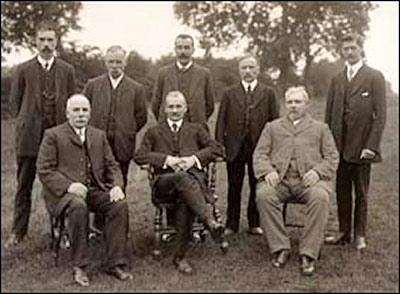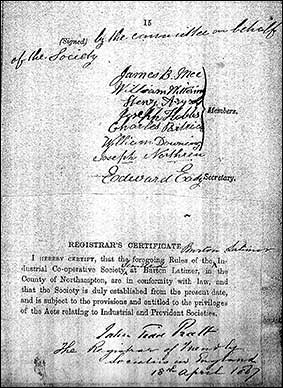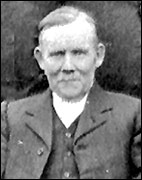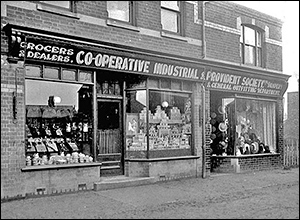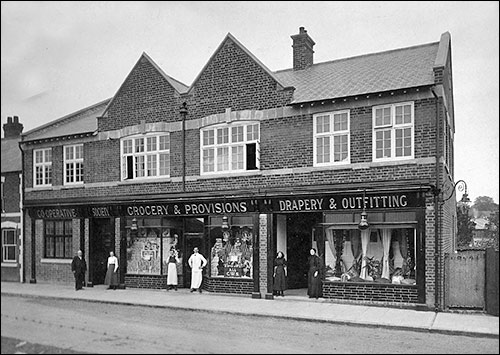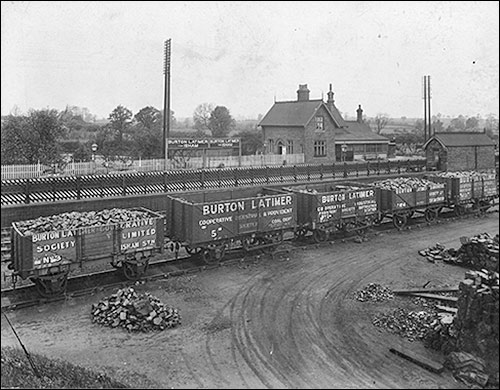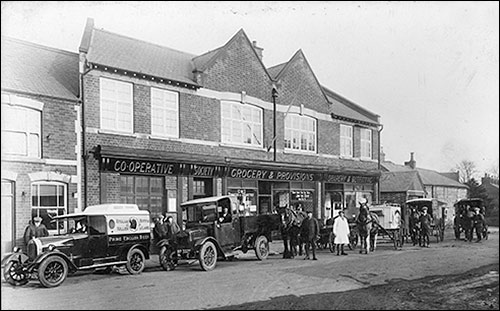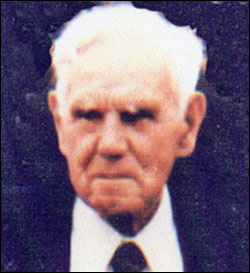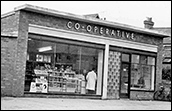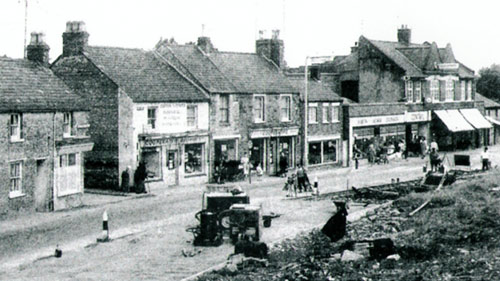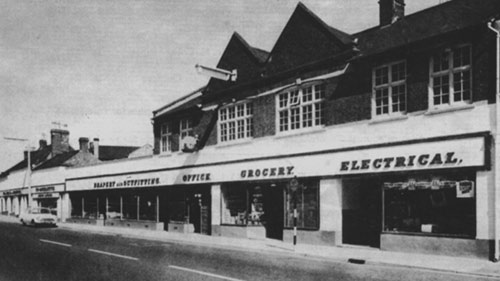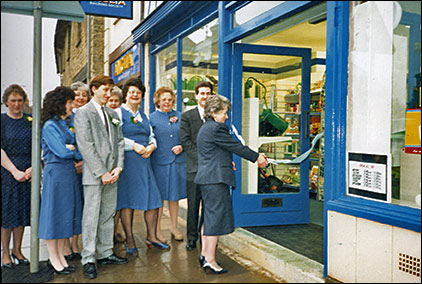| Article by John Langley 2006 with additions 2014 |
||||||||||||||||||||||||||
|
||||||||||||||||||||||||||
|
||||||||||||||||||||||||||
|
THE HISTORY OF THE CO-OPERATIVE INDUSTRIAL & PROVIDENT SOCIETY LTD. The Co-op was owned by residents of the town who were the shareholders; they had a sharebook and were issued with a number, often as a household rather than individuals. When a purchase was made a small ticket was issued, on it was the amount spent and the customer’s share number, the top copy was given to the customer and the second copy went to the office, the dividend or “divi” as it was called was added to their account and it was paid to them every six months. The Society was managed by a President with a committee whose members were residents of the town and the day-to-day running of the business was the responsibility of the General Secretary. The Early Years From the Northampton Mercury Sat December 24 1887: CO-OPERATION – A meeting was held in the National School-room on Friday 16th Inst., to take steps towards the formation of co-operative stores in the village, a deputation was present from
It is not known where the first store was or in what form; Joseph Mason is listed in a directory in 1874 as store Manager and George Buckby in 1876. Research is ongoing and the following was found in the Northampton Mercury 28 April 1888
After registration at a committee meeting on Secretary: Ted Freestone, Treasurer:William Freeman. Committee Members: Lewis Mason, William Ball, Charles Stokes, Joseph Gale, William Reed, Joseph Eady and Jos Blaxley. At the meeting held on
The meetings were held over the next two years at three different locations, the Parochial School rooms, the On From evidence found in the newspaper extract above it would appear that new premises were established next door to the Dukes Arms but in 1890 land was purchased from a Mrs. C Jolly, each of the committee members investing £100 towards the project, and new stores were built in
To the left of the grocery was the opening to the yard at the rear, large enough for the horse drawn drays [carts] that delivered the milk and bread to pass. On the left of the opening was the bakehouse, the entrance to this was at the side within the opening with windows on the street, there was an opening on the first floor with a hoist so that lorries delivering sacks of flour could reverse into the opening and it would be lifted and stored there. On entering the yard the butchers shop was on the right. At the top of the yard facing the entrance was the abattoir. To the right were the animal pens and to the left were the stables for the horses with space to park the drays. The Co-op also owned a field in 1913 - 1935
In 1913, new shops were built in the High Street They consisted of two shops a drapery and a grocery with a cash office on the ground floor, and the main office on the first floor, John Eben Taylor’s house and cobbler’s shop were demolished to make way for this development. Charles Stokes was General Secretary until his death in 1923 and then Mr. Harry Baldwin took over. Also by then, Stephen Mason had become President. In 1924 a furniture shop was added to the In 1925, the building of In 1929, a new butcher’s shop was built opposite the Central Stores on the corner of the recently built
To cater for its coal department, the Society rented a siding at Burton Latimer station and purchased five second-hand coal trucks which were used to collect coal from Gedling and Swanwick collieries to be delivered around the town. In the mid 1930s Charles Loveday’s saddlers shop and two cottages were demolished and an extension was built to the left of the High Street shops and this became the drapery shop which was opened on
Pre and Post Second World War During the 1939-1945 war, the left-hand side shop in
The late 1940s to the end of the 1960s saw a period of change and expansion. There were closures in By 1950, he hardware shop which had been owned by A.J. Wittering for more than 30 had been purchased and became the Co-op Hardware Dept. In 1957 the large garage on the right of the entrance to the yard at the High Street Central Stores was converted to an open-fronted wet fish and greengrocery shop, the sliding door was retained to secure the shop when closed. In 1950, two electric battery powered mobile grocery shops were purchased. They were large vehicles, almost the size of a single deck bus, their battery pack weighed about 8 tons and when fully loaded they probably weighed as much as 15 tons. They traded around nearby villages and Barton Seagrave. The tobacconist shop owned by Alf Coles adjacent to the main store became the Electrical Department when Alf retired c1953. This allowed a full range of electrical goods to be sold. Previously televisions had been sold from the furnishing department.
Between 1952 and 1954 a new grocery and butchery store was built in the High Street and at about the same time the grocery shop in In 1955 and 1956 the abattoir in In 1956, alterations were made to the electrical shop when it was combined with the two remaining cottages on either side, the one on the right was already a furniture showroom and it all became the furniture shop. The electrical shop moved to the previous furniture shop. In 1957 the retirement took place of Miss Eva Stokes who had worked at the Co-op for 45 years, having started at the age of 15 as its first office-girl when her father, Charles Stokes, was its Secretary/Manager. Click here for a newspaper report about her retirement. The Years of Expansion On The only chemists shop in the town, Bennett’s Two new grocery branch shops in nearby Barton Seagrave were built, one in Masons Garage in the High Street was purchased so now the Co-op could offer petrol and car sales and repairs as well as to their own vehicles, which had been serviced there by the Mason family. A second garage, Broughton Motors, situated on the A43 between So the Co-op could now supply almost everything a household needed and over a wider area and, if requested, there was free delivery of anything in the shops.
In 1969 the whole of the interior of the Central Store from the Hardware to the Electrical Departments was opened up and made into one large Department Store. It was officially opened by Jimmy Perry the co-writer of ‘Dad's Army’ who had served with Mr. Waller in the R.A.F. Mr. Waller retired c 1976 and Mr. D. F. Mawby became General Secretary. In 1979, The Beginning of the End In 1982 the Society was merged with the South Midlands Co-op and during the next 10 years all the shops and businesses formally owned by the Burton Latimer Co-op were closed or sold. The main Central High Street Store was closed on the 1st March 1989 and demolished in 1990.The staff and non food business on a smaller scale was transferred across the road to a much smaller shop 34 High Street, which opened on 2nd March 1989.it did not last very long and closed on 5thJanuary 1991. Not long afterwards came the closure of the Society’s last shop, the grocery and butchery at
In conclusion, from its beginnings in the 19th century, Burton Latimer Co-operative and Industrial Society gradually increased its business in the 20th century especially the rapid expansion from the mid 1950s to the end of the ‘60s when it dominated all areas of retailing in the town. Then, in the 1980s, it suffered an equally rapid decline until now, at the beginning of the 21st century, there is no trace that it had ever existed. Over one hundred years of retail history gone for ever! There is little doubt that the main cause of the decline along with thousands of small traders was the increasing domination of the major supermarkets, out of town shopping centres and motorcar ownership. A final word about the fate of all its properties and their status in 2006. The High Street Central Stores, the grocery and butchery at . |
||||||||||||||||||||||||||
